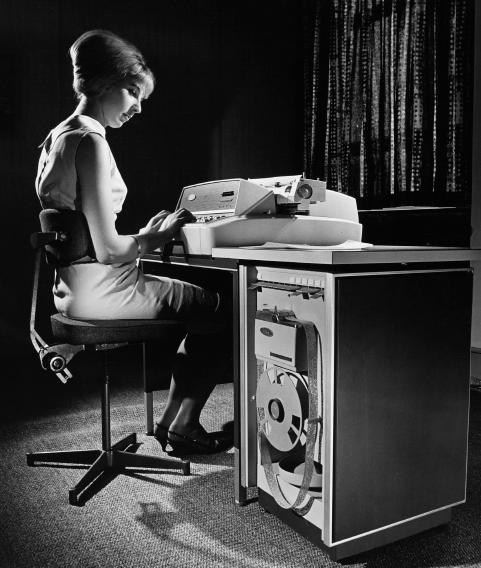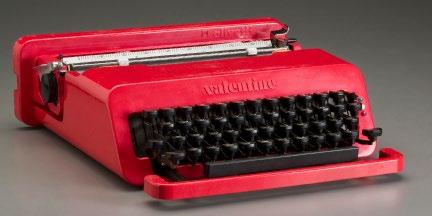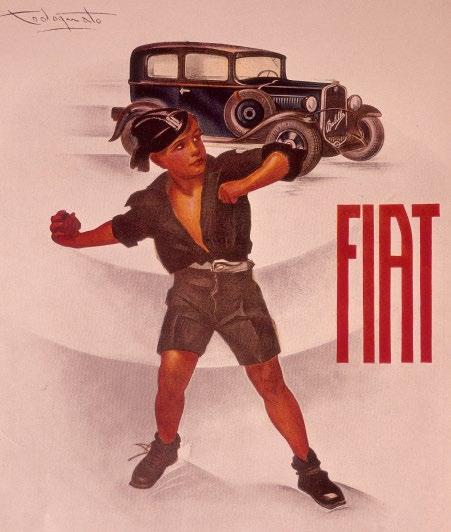








AC/DC: these initials have left their mark on history, not only on rock music. The so-called current war was a battle between the two greatest inventors of the nineteenth century, Thomas Alva Edison and Nikola Tesla. The stakes were high: electric power transmission over long distances to light up the streets and the lives of millions of people. Both of them were telegraphers and brilliant scientists. They followed different routes, or rather, different currents. Edison saw science as a means of profit, whereas Tesla aimed to improve human life.
On September 4th, 1882 Pearl Street Station, the first commercial power station in the world, began to generate direct current in the south of Manhattan, lighting with 400 lamps the homes and stores of 85 residents, customers of the Edison Illuminating Company. It was a success! However, direct current, a flow of electrical charges passing always in the same direction at a constant intensity, was too costly, and was subject to serious dispersion problems over long distances.
Nikola Tesla, the “wizard” of electricity, in the Pikes Peak laboratory in Colorado, in 1900 ca. His high-voltage, high-frequency transformers discharged into the ground quantities of energy greater than those of lightning.


The speed of optic fiber seems to arrive everywhere. Like the mythical steed of a Hindu legend, which inspired a French artist: he symbolically covered a horse in fiber optic material. Yes, because this is the magic of fiber: this versatile material can create fantastic artistic installations, help doctors in endoscopies and precise surgical interventions, and permit the ever vaster, faster, and safer spread of information.
36 e 37 The Integration Laboratory of Telstra, an Australian telecommunications company. In 2015, it collaborated with Ericsson Telstra to achieve a fiber-optic link—at 100 gigabits per second—over a distance of more than 6,2 miles between the cities of Melbourne, Sydney, and Perth. On the right, sections of fiber-optic cables: they offer the highest transmission speed possible.
38-39 Detail of the sculpture Seed Cathedral, whose construction was coordinated by the British architect Thomas Heatherwick. Exhibited at the Shanghai Expo in China in 2010, it was over 65 feet high and composed of 60,000 transparent optic fibers containing plant seeds.


Two things have played a crucial role in the history of space exploration: power and propaganda. The technologies that can be used for peaceful and for military purposes are called “dual-use”, and space technology is one of the most important of these.
The first step: rockets capable of reaching a sufficient altitude to enter the Earth’s orbit, the so-called Karman line (60 miles above sea level), where it is considered that “space” begins. The first real rockets were the V-2s used by the Nazis during the Second World War to bomb various European cities; these were then inherited by the Americans, together with the engineers, also Nazis, led by Werner Von Braun. In fact, on June 20th, 1944, a V-2 was the first human artifact to reach the Karman line. After the war ended, the V-2s provided the first image of the Earth from space, (a 35mm black-and-white photograph) in October, 1946.
The so called “space race”, which broke out during the Cold War between the USSR and the USA, transformed science fiction into reality. Sputnik 1 became the first artificial satellite in orbit (October 4th, 1957). Laika was the first animal
The International Space Station (ISS) in orbit, viewed from the space shuttle Atlantis as it moves away after separation. It has just completed Mission STS-122 by transporting new instrumentation aboard the ISS and bringing back instruments that were no longer operative.



78 The Friden Flexowriter was one of the first electric typewriters, designed by E. Remington and Sons in the ’20s and then developed by IBM, which produced it until the ’70s. When linked to calculators, it became a predecessor of the modern computer.
79 Two famous Olivetti models, the Lettera 22 designed by Marcello Nizzoli, winner of the Premio Compasso d’Oro in 1954, and the Valentine by Ettore Sottsass and Perry A. King. Both models belong to the permanent collection of the MoMA in New York.


The zip is quick!
A slight, discreet, little gleam that betrays a new presence, hidden on the pockets of the money belts of American soldiers leaving for the First World War. The invention was the work of the Swede, Gideon Sundbäck, employed by Whitcomb Judson’s Universal Fastener Company.
In fact, by perfecting the system of hooks and eyes created by Elias Howe (the inventor of the sewing machine), in 1893 Whitcomb Judson had deposited the patent for a “separable safety closure”, or clasp locker, to replace shoe and boot laces. However, because of the unreliability of the mechanism and its excessive production time, he had not obtained the success he had hoped for. Judson had not given up, and he subsequently founded the Universal Fastener Company, working ceaselessly to improve his creature.
The turning point came in 1906, when a young Swede presented himself to the company, laden with designs, hopes and bratwurst from Germany, where he had studied to be an engineer. Gideon Sundbäck quickly managed to make a good impression on the head designer Peter Aronsson, who was also of Swedish origin, and to win the heart of his daughter, Elvira. He was thus tasked personally with Judson’s invention. In 1913, he invented the first “modern” zipper, in which small metal teeth took the place of the hooks and eyes and were placed in cloth strips, so that they could be sewn onto fabrics. He quickly moved from soldiers’ belts to rubber galoshes: they would be called Zipper Boots and the name by which we know this device today derives from Sundbäck’s creation.
Once the focus of a bitter contest between the traditionalist supporters of the button and the progressives of the zip, today the zipper is seen on backpacks, clothes, and bags. It has now taken the place of its bitter rival even on those Levi’s jeans that made their appearance in 1873 in the fashion world, ready to revolutionize it.



112 In the advertising poster for the FIAT 508 Balilla there is a boy in Fascist uniform ready to hurl a stone. The drawing pays homage to Giovan Battista Perasso, nicknamed Balilla, who, with a stone, set off the Genoa revolt against the Austrians in 1746. This FIAT model was presented at the 1932 Milan Motor Show, and it became the most popular for the Turin company. It covered 60 miles on only 2 US gallons of fuel.
113 On May 27th, 1938 the Chancellor of the Reich, Adolf Hitler, inspects a new “people’s car” at the Fallersleben plant, in Germany. The car was designed for a production of 6 million. On the left of Hitler we see the car designer Ferdinand Porsche, the founder of Volkswagen.
134 One of the first gramophones conceived and produced by Emile Berliner. The serial number was 45048, the year 1890, the make Berliner Gramophone. It was an uncomplicated machine, with all the mechanisms visible, but already very efficient.
134-135 A Victor gramophone, with the metal horn mounted directly on the tone arm, and the white dog listening intently. The pay-off is “His Master’s Voice”. It is one of the most famous and successful advertisements in history.




Color lithograph (1896) by Henry Brispot, preserved in the Bibliothèque Nationale de France, Paris, publicizing the Lumière brothers’ invention, the “Cinématographe”.


for projection, and the spooling of a perforated film. The cine-camera and projector worked with a handle, with 35mm celluloid film, which was highly inflammable; the Lumières began to produce it for themselves, but already at the end of the nineteenth century Eastman Kodak dominated the market.
What happened afterwards was a succession of new inventions that stimulated the birth of the film industry. The uttermost symbol became Hollywood, created in America in 1911, but film production grew rapidly in Europe as well. The cinema expanded its narrative ability through the evolution of direction, scenography, camera techniques, and montage. The first films documented reality: wars, political demonstrations, entertainment, nature, daily life; then new genres appeared. The comic genre would give us the masterpieces of Buster Keaton, Charlie Chaplin, Stan Laurel and Oliver Hardy; the historical, epics like Battleship Potëmkin (1925); in America, the “Roaring ’20s” produced comedies by Cecil B. DeMille, the epic Ben Hur (1925), Westerns. The next decade was that of the great stars who filled the tabloids and people’s dreams: Rodolfo Valentino, Greta Garbo, Marlene Dietrich.
The advent of sound marked a turning point and the speed increased to 24 frames per second. From the first silent films, with on-screen captions and accompanied by live music from the pianist or even an orchestra, films moved to original music, but still recorded separately, and finally to The Jazz Singer by the director Alan Crosland, the first talking film produced by Warner Bros in 1927. For the color revolution, despite the first manual experiments and the
Two frames from the first films projected by the Lumière brothers: La Sortie de l’usine Lumière (left) from December, 1895 and L’Arrivée d’un train en gare de La Ciotat (right) from January 6th, 1896.


“It’s a history book, a narrative of the journey of our species through time. It’s a shop manual, with an incredibly detailed blueprint for building every human cell. And it’s a transformative textbook of medicine.” In 2001, the geneticist Francis Collins, director of the Human Genome Project, thus described the mapping of the human genome. Two years later the work was complete, with the identification of about 22,300 human genes, a number markedly lower than the one hypothesized at the beginning.
The project began in 1990, involving the USA, the United Kingdom, Canada and New Zealand. However, right from the beginning of the century, geneticists had investigated the mechanisms of hereditary transmission, starting with the American Thomas H. Morgan, who was awarded the Nobel Prize for identifying chromosomes as the depositors of genetic information. The turning point was in 1953, when scientists began to understand the structure of DNA and decipher its language. Two British institutions worked on this assiduously, Cambridge and King’s College. On one hand, the two researchers Crick and Watson, on the other Maurice Wilkins and the young Rosalind Franklin. Franklin was the first to “see” the structure of the double helix and to photograph it with X-rays; Crick and Watson constructed a rudimentary model of it, and in 1962
Analyses of DNA conducted on individuals from all the continents have indicated a 99.9% genetic identity of the human species, despite physical differences. 94% of the remainder (0.1%) concerns variations within the same population, and only 6% concerns variations between individuals from different populations.